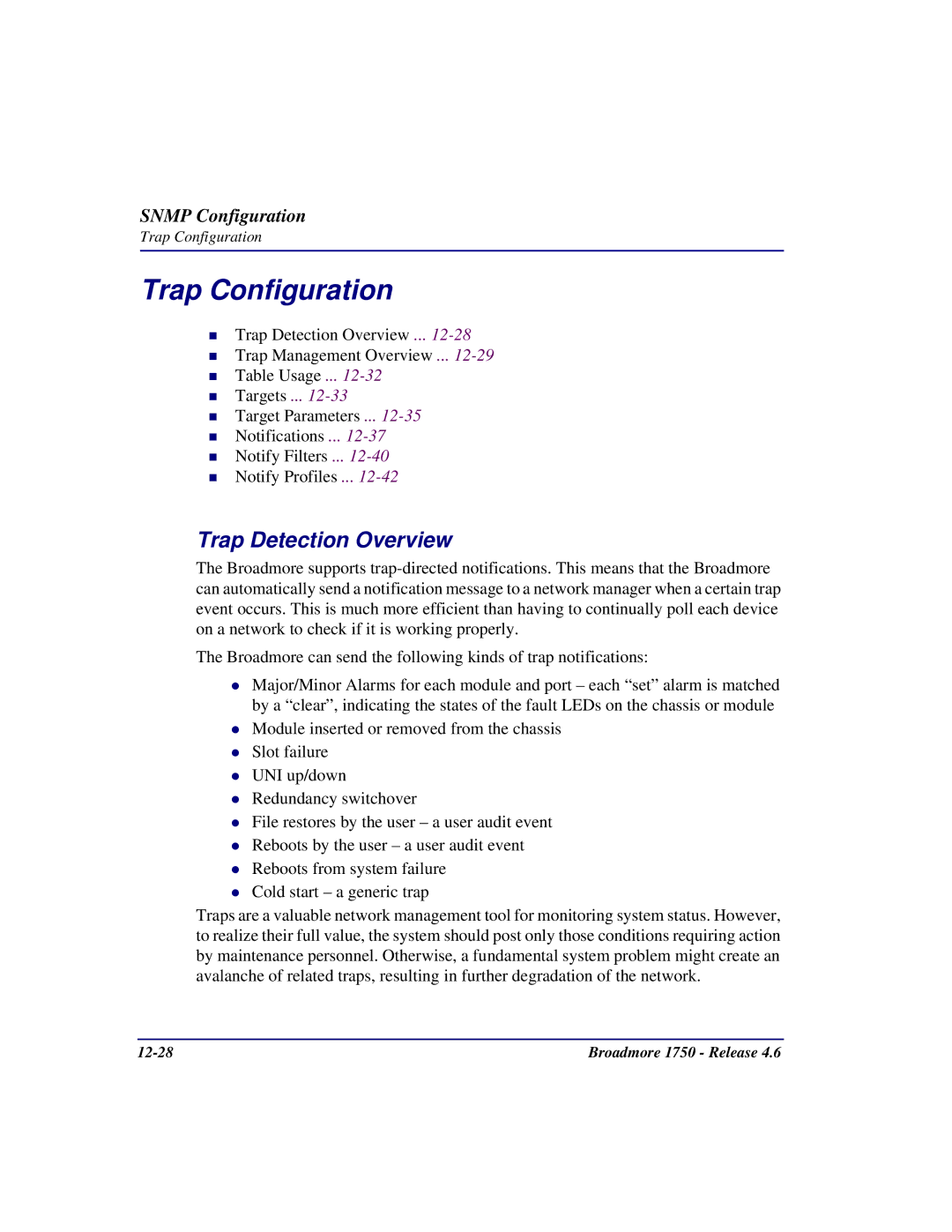
SNMP Configuration
Trap Configuration
Trap Configuration
Trap Detection Overview ...
Trap Management Overview ...
Table Usage ...
Targets ...
Target Parameters ...
Notifications ...
Notify Filters ...
Notify Profiles ...
Trap Detection Overview
The Broadmore supports
The Broadmore can send the following kinds of trap notifications:
Major/Minor Alarms for each module and port – each “set” alarm is matched by a “clear”, indicating the states of the fault LEDs on the chassis or module
Module inserted or removed from the chassis Slot failure
UNI up/down Redundancy switchover
File restores by the user – a user audit event Reboots by the user – a user audit event Reboots from system failure
Cold start – a generic trap
Traps are a valuable network management tool for monitoring system status. However, to realize their full value, the system should post only those conditions requiring action by maintenance personnel. Otherwise, a fundamental system problem might create an avalanche of related traps, resulting in further degradation of the network.
Broadmore 1750 - Release 4.6 |
